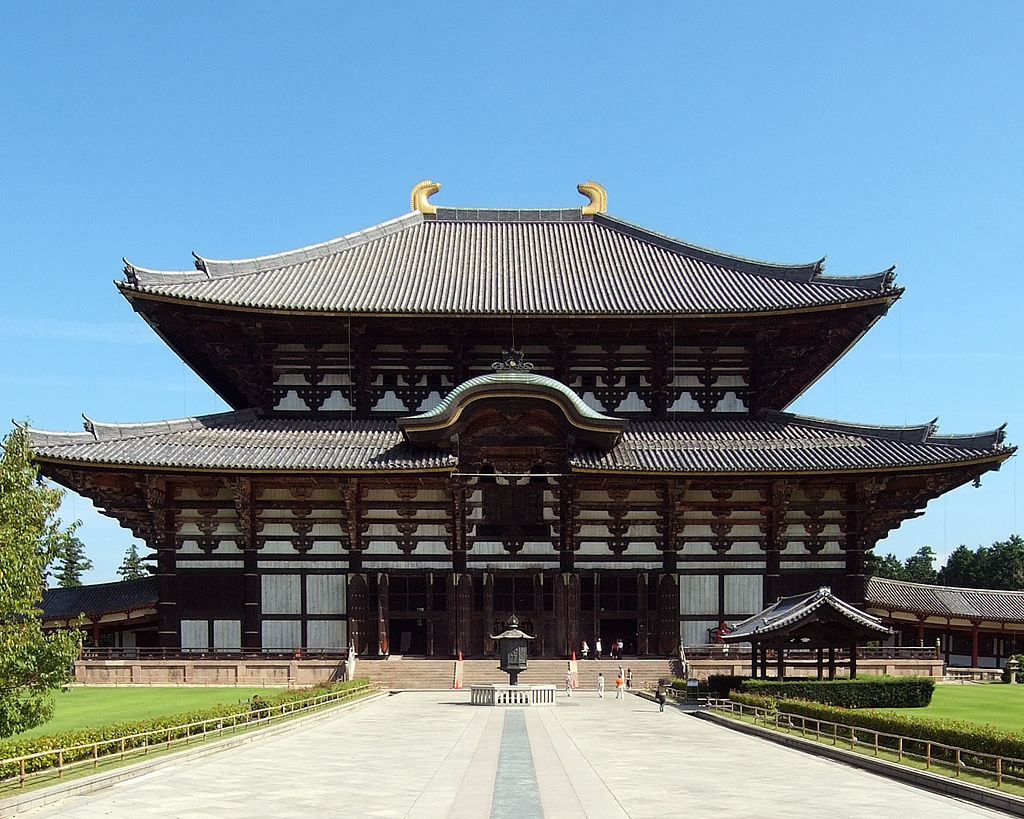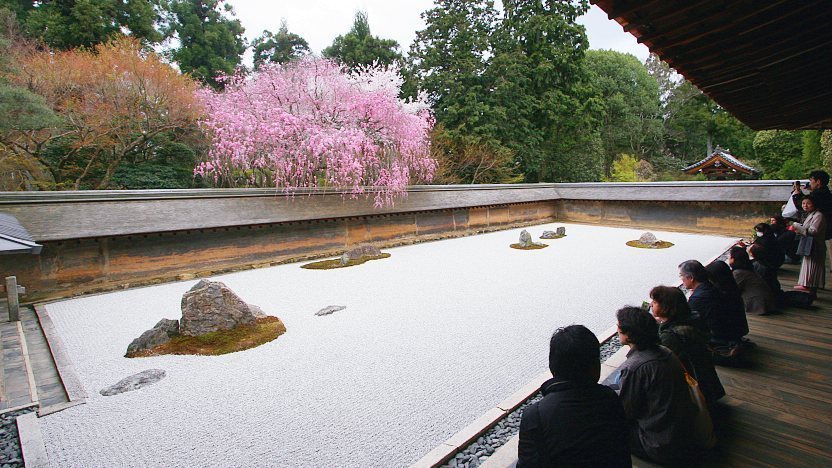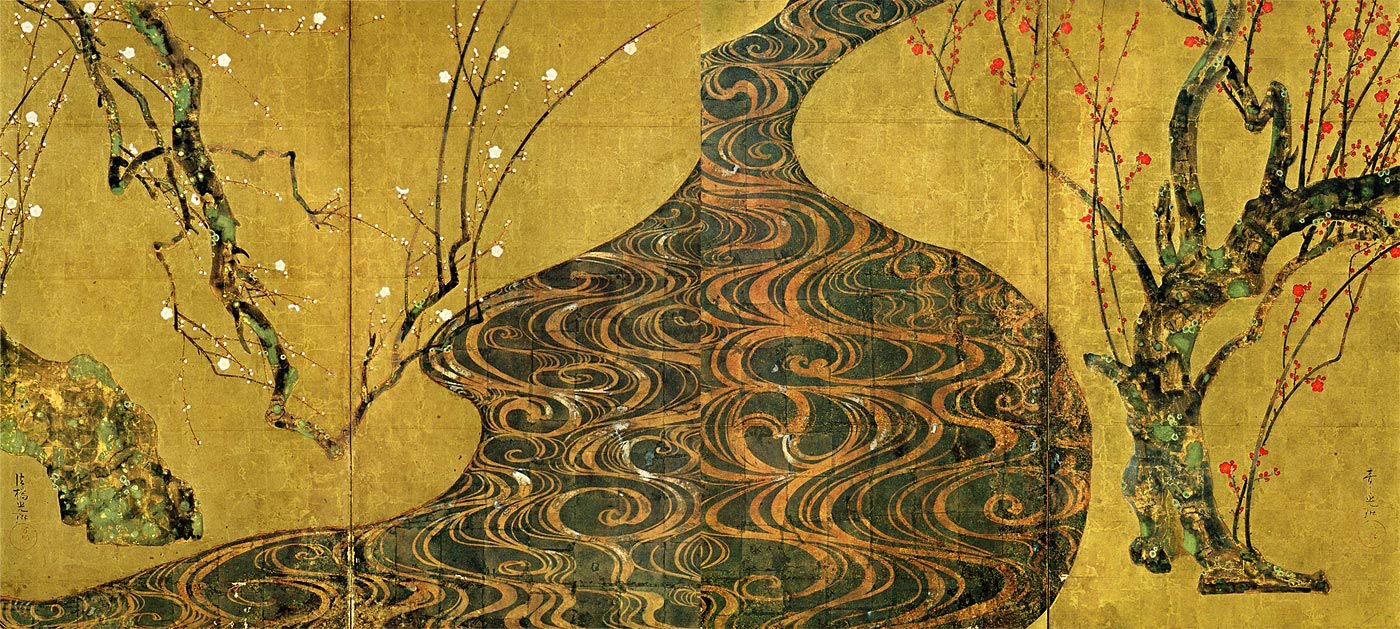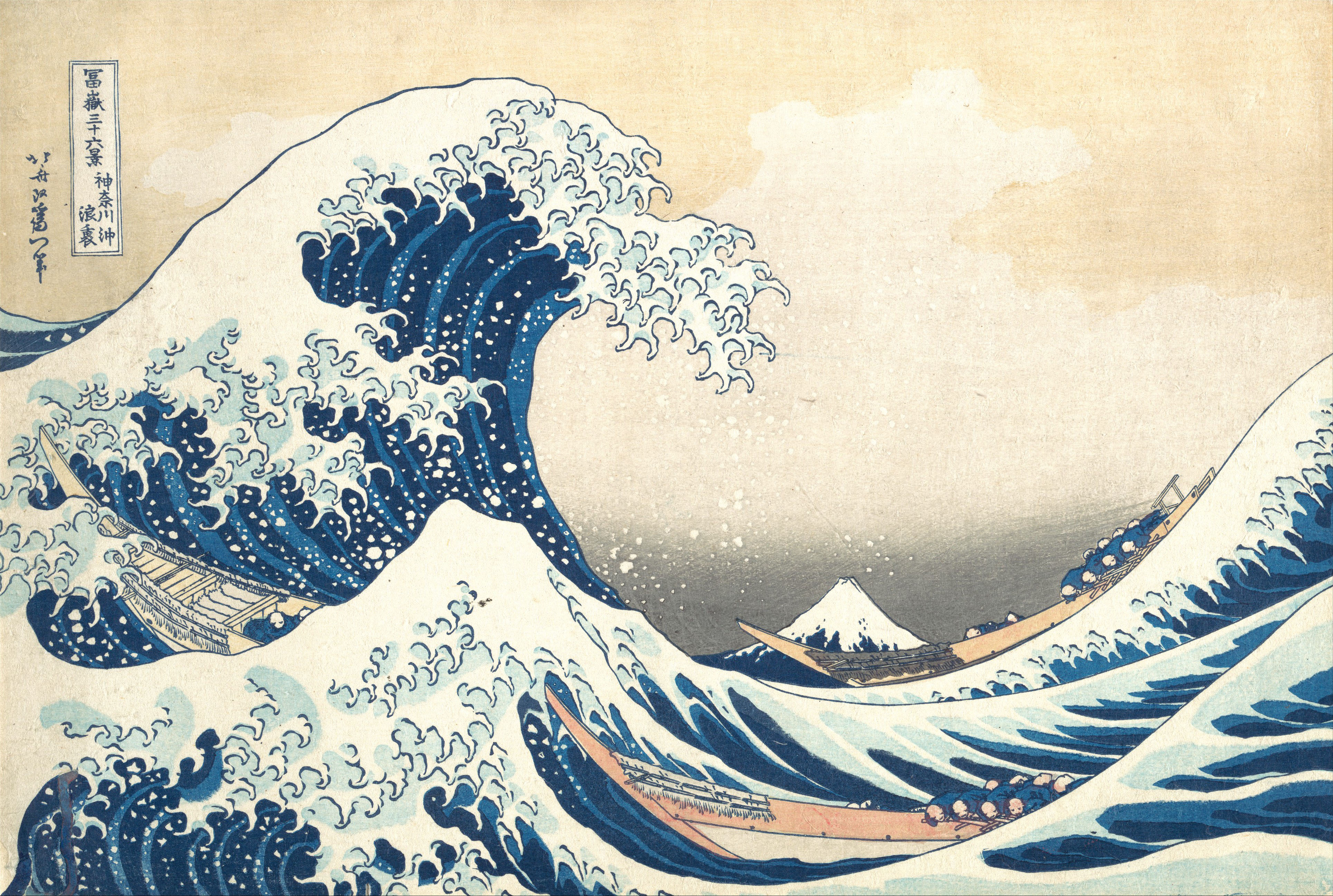Charly Castillo
AP Art History 🖼
34 resourcesSee Units
Japan 🇯🇵
Architecture
Zen Buddhism and Shintoism were the two most practiced religions in Japan during the construction of these structures, and its influence is evident. Japanese buildings are usually made from undressed (not finished, natural) wood, and there are many zen gardens (gardens that resemble nature and are used for meditation) found around the nation. This is because both religions promote being harmonious with nature, whether that's by using natural materials or finding peace in it, showing that in Japan, religion and nature go hand in hand 🤝

Image Courtesy of Wikipedia (CC BY-SA 3.0). Tōdai-ji.

Image Courtesy of Japan Guide. Ryōan-ji.
❓Checking for Understanding: What is the role of nature in Tōdai-ji and Ryōan-ji? Give specific examples.
Painting and Printmaking
Like Japan's architecture, many of its paintings and prints also revolve around nature because of the influence of Zen Buddhism and Shintoism. Japanese ukiyo-e painters created genre scenes (works depicting scenes of everyday life) of things like outdoor scenes and people at work, which you can see in the works below. Artists like Ogata Kōrin (painter of Red and White Plum Blossoms) were inspired by the yamato-e style and used techniques like tarashikomi and mokkotsu to give the appearance of water ripples 🌊 and flowers in bloom 🌸

Image Courtesy of Khan Academy. Red and White Plum Blossoms.

Image Courtesy of Wikipedia. The Great Wave off Kanagawa.
Browse Study Guides By Unit
🗿Unit 1 – Global Prehistoric Art, 30,000-500 BCE
🏛Unit 2 – Ancient Mediterranean Art, 3500-300 BCE
⛪️Unit 3 – Early European and Colonial American Art, 200-1750 CE
⚔️Unit 4 – Later European and American Art, 1750-1980 CE
🌽Unit 5 – Indigenous American Art, 1000 BCE-1980 CE
⚱️Unit 6 – African Art, 1100-1980 CE
🕌Unit 7 – West and Central Asian Art, 500 BCE-1980 CE
🛕Unit 8 – South, East, and Southeast Asian Art, 300 BCE-1980 CE
🐚Unit 9: The Pacific, 700–1980 ce
🏢Unit 10 – Global Contemporary Art, 1980 CE to Present
🙏Exam Reviews

Fiveable
Resources
© 2023 Fiveable Inc. All rights reserved.